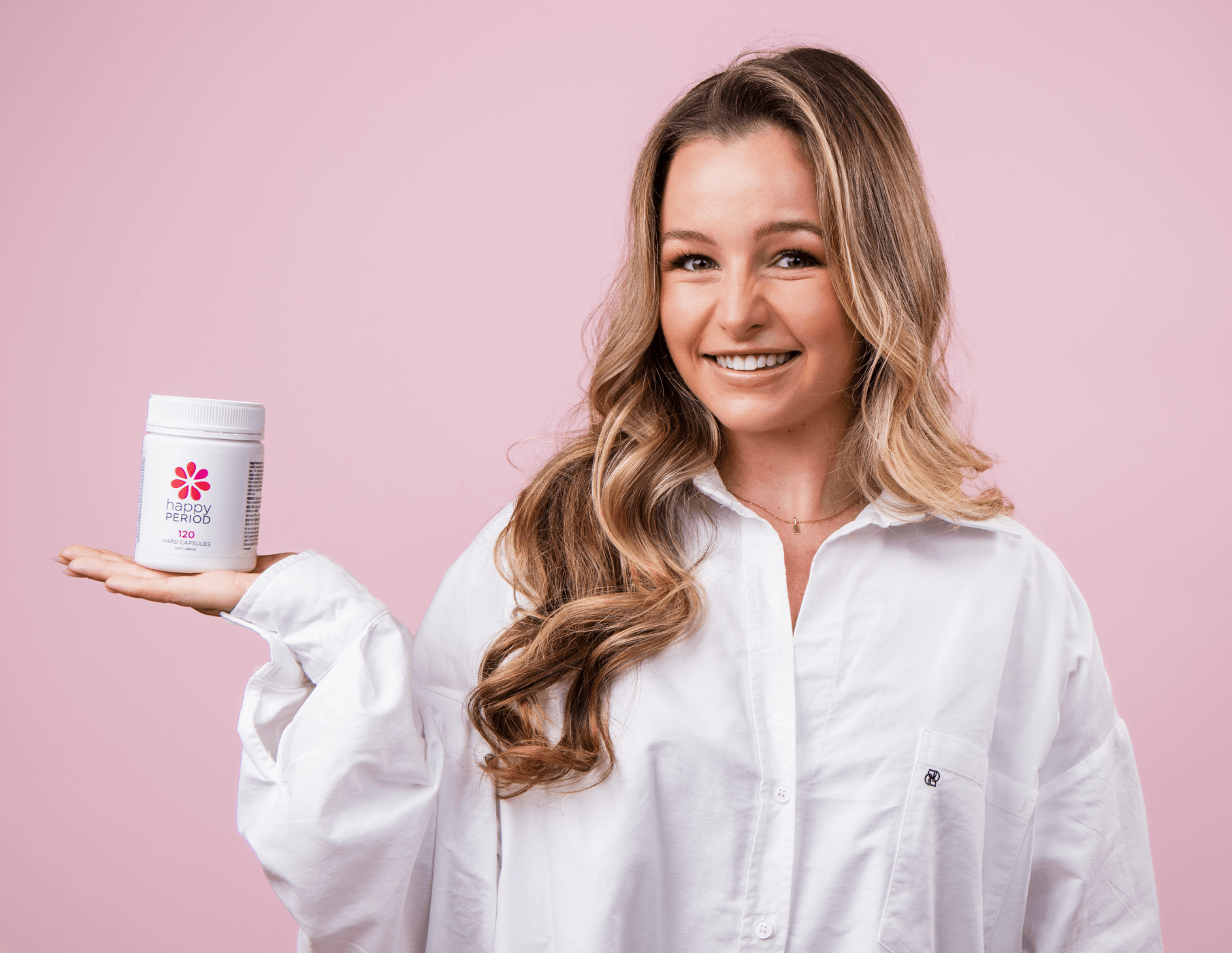What is adenomyosis?
Adenomyosis is now considered a common disorder that predominantly affects women in their late reproductive or early perimenopausal years (from 35 to 50). However, it is now increasingly seen as a condition identified in young fertile-age women. It is thought to arise from the abnormal growth and invasion of the endometrial tissue into the myometrium (smooth muscle of the uterine wall), although it can spread wider to other areas also.
The issue with the migration of the endometrial tissue is that it is still responsive to the monthly cyclical hormone fluctuations a woman experiences. This means that the ectopic endometrial tissue will swell when estrogen levels of the body increase during the cycle. This creates pain, inflammation, and congestion in the area where it's found.
What are the symptoms of adenomyosis? Back pain, pelvic pain & more
Common symptoms associated with adenomyosis include:
- chronic pelvic and/or back pain
- dragging, congestive pain in the affected area
- dysmenorrhea (painful periods)
- menorrhagia (heavy periods)
- anaemia
- painful intercourse
- fluid retention, abdominal distention, bloating, weakness and fatigue during menstruation
How adenomyosis is diagnosed
Often the diagnosis of adenomyosis is difficult to differentiate from other reproductive conditions such as fibroids, polyps, or endometriosis. The symptoms are quite similar and therefore hard to accurately diagnose, although fibroids generally manifest as nodular uterine ligaments.
The symptoms experienced include menorrhagia (heavy bleeding), congestive pain, and heaviness of the abdomen (caused by an increase in the size of the uterus). The most effective way to confirm adenomyosis is to examine the uterus after a hysterectomy; however, pelvic imaging such as an ultrasound or MRI can detect signs of the condition. The pelvic examination usually shows a large, bulky or irregular-shaped uterus which is painful when palpated.
The causes of the pathogenesis of the condition primarily suggest that the abnormal presence of the endometrial cells within the myometrium initiates myometrial smooth muscle hypertrophy. A second theory also proposes that myometrial smooth muscle dysfunction is a result of a primary defect in the myometrium itself.
Other potential causes of adenomyosis are endometriosis, estrogen excess, inflammation present in the reproductive organ/pelvis, or impaired immunity. Risk factors include multiple pregnancies or uterine surgery (Caesarean section or fibroid removal).
Managing and treating adenomyosis without surgery
The positive news is that adenomyosis often disappears after the onset of menopause. However, this isn't necessarily great news for younger women who are not even close to the age of 50!
Conventional medical treatment for adenomyosis was historically a hysterectomy; however, many conservative and less invasive approaches are increasingly being used in recent times with much success.
Natural treatment for adenomyosis
Adenomyosis requires treatment to reduce discomfort and create holistic health. Below are 11 treatment options that can help manage adenomyosis naturally.
- Use adaptogenic herbal medicines such as Vitex, sage and black cohosh to assist the body in with premenstrual symptoms. These phytomedicines are found within our Happy Hormones formula.
- Regulate estrogen dominance to reduce the severity of PMS symptoms such as swelling, pain and other common complaints.
- Essential fatty acids such as fish oil and anti-inflammatory herbs like Boswellia, Devil's Claw, Cramp Bark, and Eucommia can help reduce localized congestion and inflammation of the pelvic region.
- Practize meditation and get emotional support to help manage bouts of pain associated with the condition.
- Address heavy bleeding to lessen the pain. There are many herbal remedies available at holistic health stores. In severe cases, however, conventional medicines may be required to stem the bleeding.
- Manage IBS symptoms which commonly occur due to the close location of the uterus and bowels. Quite often, the endometrium will migrate to the outer lining of the bowels and create issues to its motility. Common triggers of IBS are gluten and dairy so consider removing these from your diet.
- Follow an alkalizing and anti-inflammatory diet to ensure optimal metabolism of hormones. Any dietary and lifestyle changes need to be ongoing to minimize the chances of continued reoccurrence as adenomyosis may be something you are predisposed too.
Check out our latest HAPPY HEALTHY YOU book for dozens of delectable, anti-inflammatory recipes.
- Consider acupuncture sessions to disperse the heat and inflammation from the reproductive organs.
- Soaking in a warm bath with Epsom salts helps relieve pelvic congestion. Epsom salts are high in magnesium so using magnesium oil or even making your own is another good option to build up magnesium levels. Sitz baths have also demonstrated great results in treating adenomyosis.
- Use a heating pad, hot water bottle, or castor oil pack on your abdomen to reduce symptoms.
Adenomyosis is a complex condition that requires a holistic approach consisting of the proper diet, lifestyle, and natural medicines to manage symptoms. It's not a simple issue to treat so we strongly suggest reaching out to our practitioner team for support and guidance through our online clinic.
REFERENCES
Chen et al. (2010). estrogen-induced epithelial-mesenchymal transition of endometrial epithelial cells contributes to the development of adenomyosis. The Journal of pathology, 222(3), 261–270.
https://pubmed.ncbi.nlm.nih.gov/20814901/
Hou et al. (2020). Zhongguo zhen jiu = Chinese acupuncture & moxibustion, 40(8), 834–838.
https://pubmed.ncbi.nlm.nih.gov/32869591/
Pinzauti et al. (2015). Transvaginal sonographic features of diffuse adenomyosis in 18-30-year-old nulligravid women without endometriosis: association with symptoms. Ultrasound in obstetrics & gynecology : the official journal of the International Society of Ultrasound in Obstetrics and Gynecology, 46(6), 730–736.
https://pubmed.ncbi.nlm.nih.gov/25728241/
Vannuccini S & Petraglia F. (2019). Recent advances in understanding and managing adenomyosis. F1000Research, 8, F1000 Faculty Rev-283.
https://www.ncbi.nlm.nih.gov/pmc/articles/PMC6419978/










Leave a comment
This site is protected by hCaptcha and the hCaptcha Privacy Policy and Terms of Service apply.